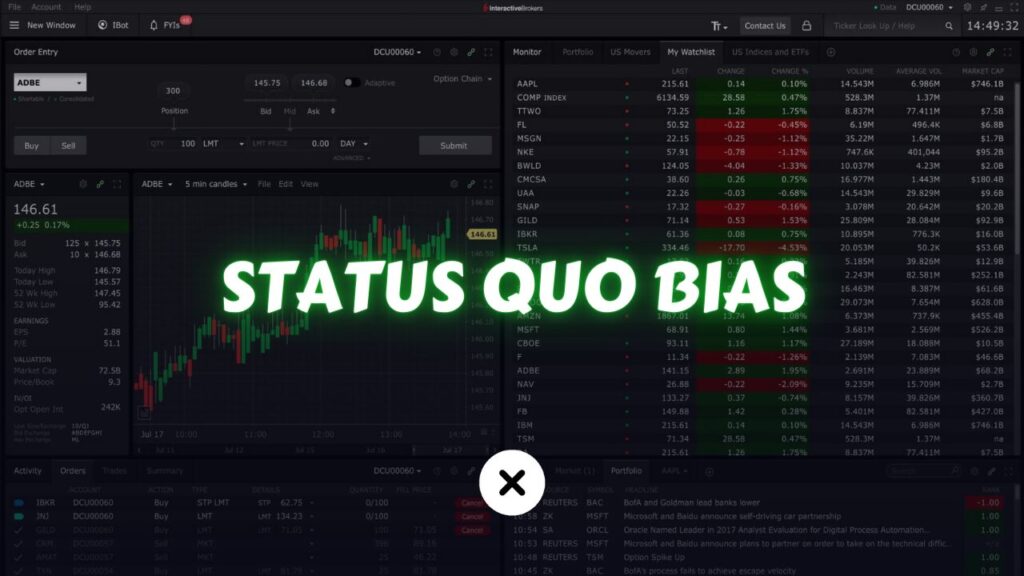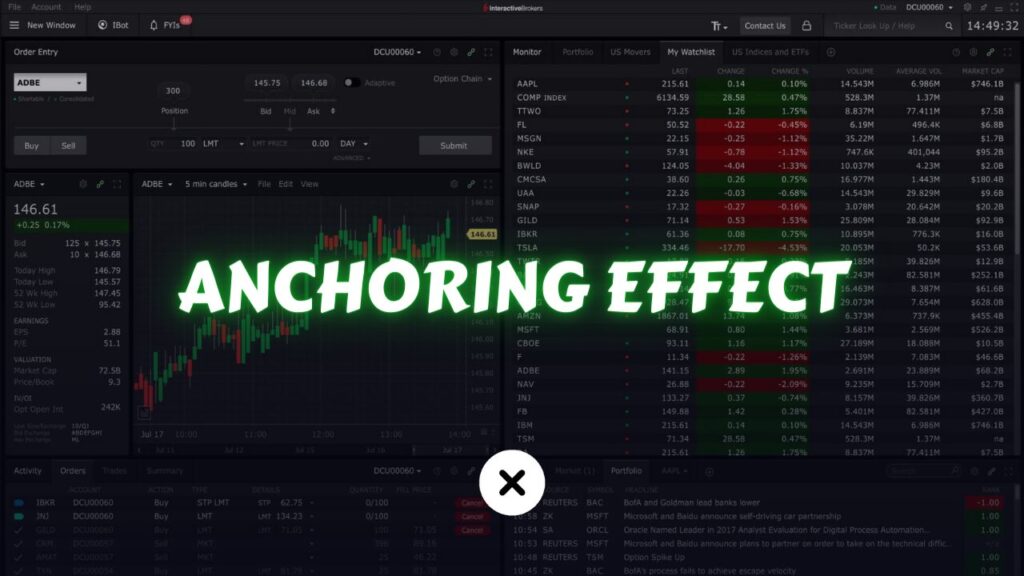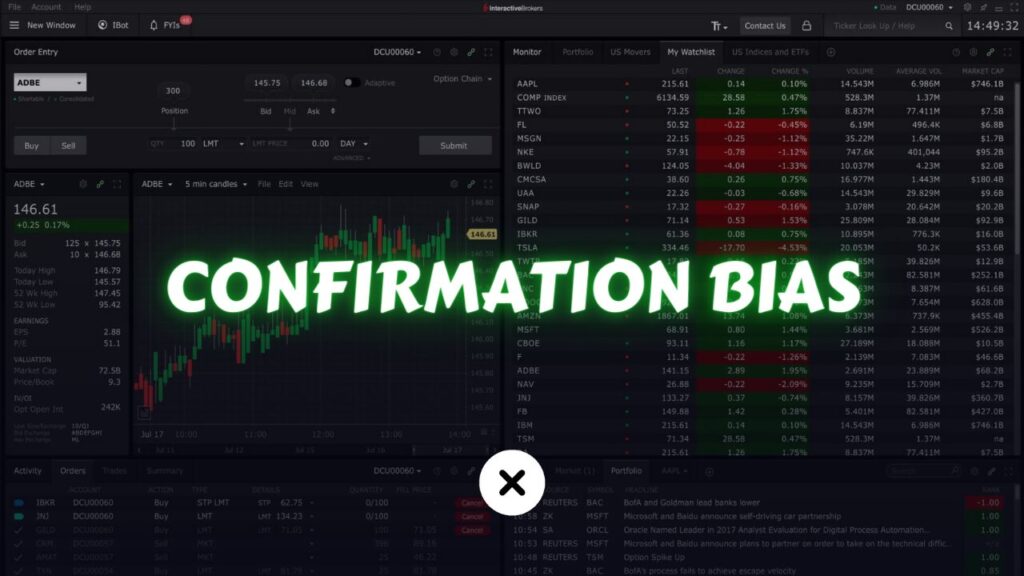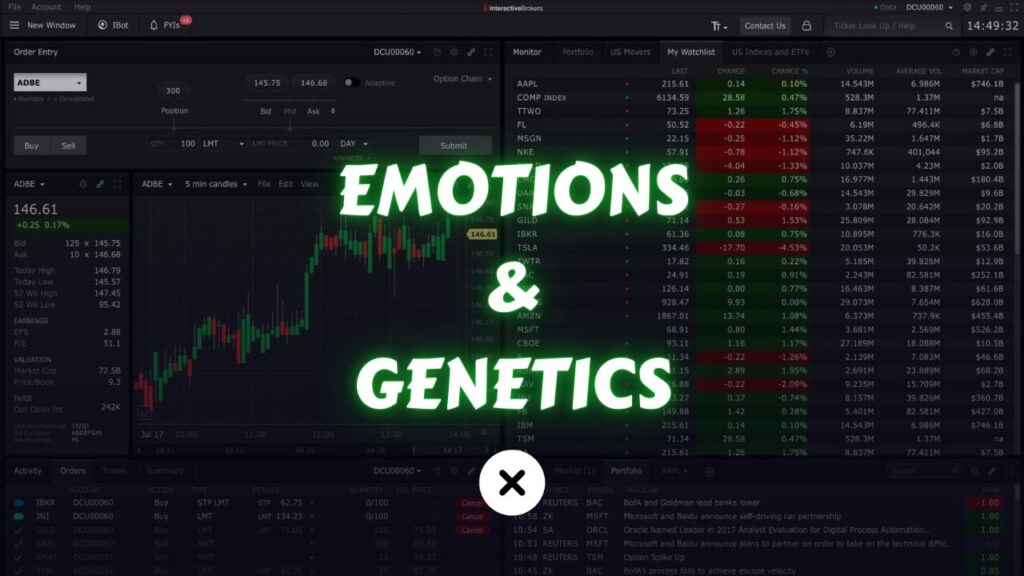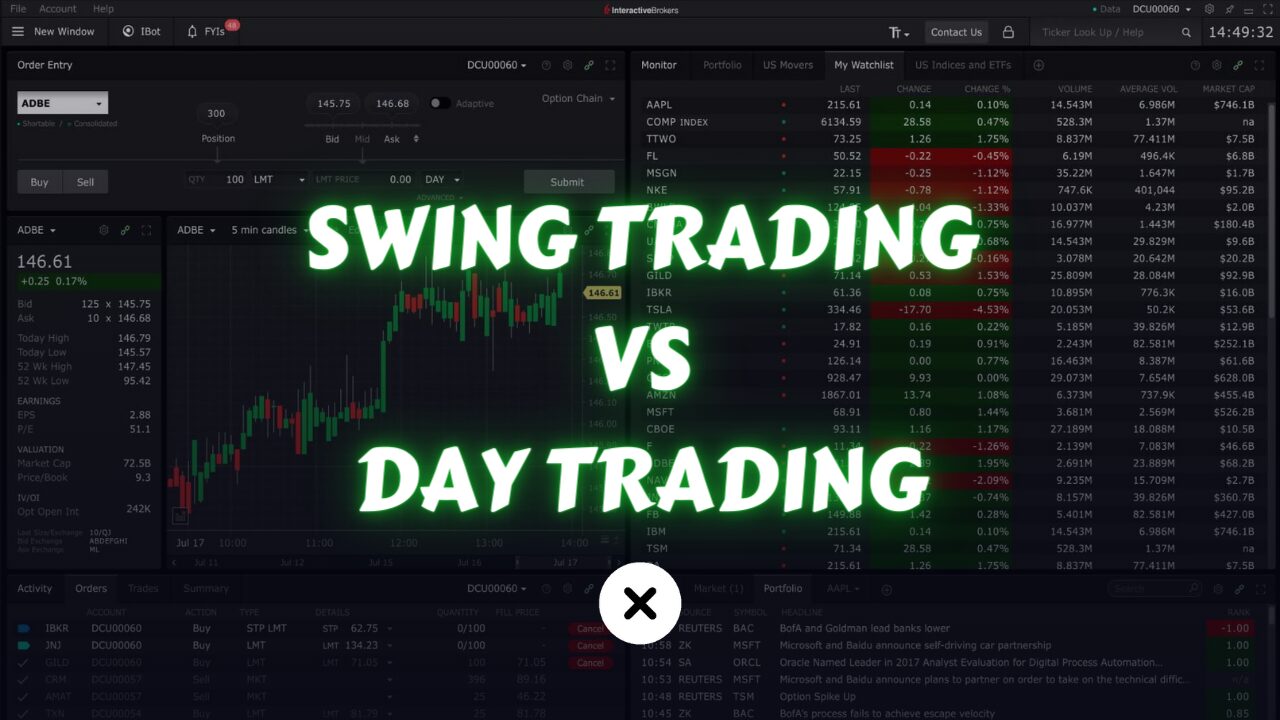
In the world of financial markets, trading strategies are as diverse as the traders who employ them. Two popular approaches are swing trading and day trading. Both strategies aim to profit from short-term market movements, but they differ significantly in terms of methodology, time commitment, risk tolerance, and potential returns. This article delves into swing trading vs day trading, providing a comprehensive comparison to help traders choose the approach that best suits their goals and lifestyle.
What is Swing Trading?
Swing trading involves holding positions for several days to weeks to capture price movements or “swings” within a broader trend. Traders seek to profit from both upward and downward price shifts by identifying potential entry and exit points based on technical analysis.
Key Characteristics of Swing Trading
Time Horizon: Positions are typically held from a few days to several weeks.
Technical Analysis: Swing traders rely heavily on chart patterns, technical indicators (like moving averages, RSI, MACD), and trend analysis to make decisions.
Fundamental Analysis: Some swing traders also consider fundamental factors such as earnings reports, economic data, and news events.
Lower Time Commitment: Compared to day trading, swing trading requires less constant monitoring, making it suitable for individuals who cannot dedicate their entire day to trading.
Risk Management: Swing traders often use stop-loss orders to limit potential losses and protect profits.
Advantages of Swing Trading
Flexibility: It allows traders to maintain other jobs or commitments.
Lower Transaction Costs: Fewer trades mean lower commission fees and spreads.
Reduced Stress: Less frequent trading can lead to lower emotional and psychological stress.
Disadvantages of Swing Trading
Overnight Risk: Holding positions overnight exposes traders to risks from after-hours market events.
Requires Patience: Profits might take days or weeks to materialize, requiring patience and discipline.
Potential for Missed Opportunities: The longer holding period may lead to missed short-term opportunities.
What is Day Trading?
Day trading involves buying and selling financial instruments within the same trading day. Traders close all positions before the market closes to avoid overnight risk, focusing on making profits from intraday price movements.
Key Characteristics of Day Trading
Time Horizon: Positions are held from seconds to hours but are closed by the end of the trading day.
Technical Analysis: Day traders heavily rely on technical analysis, using charts, patterns, and indicators for making quick decisions.
High Time Commitment: Day trading requires constant monitoring of the market and rapid decision-making throughout the trading session.
Use of Leverage: Many day traders use leverage to amplify their returns, which also increases potential risks.
Focus on Liquidity: Day traders prefer highly liquid markets where they can enter and exit positions swiftly.
Advantages of Day Trading
No Overnight Risk: Closing positions daily eliminates risks associated with overnight market moves.
Frequent Opportunities: The potential to capitalize on numerous trading opportunities within a single day.
Immediate Results: Profits and losses are realized quickly, providing immediate feedback.
Disadvantages of Day Trading
High Stress: The need for constant attention and rapid decision-making can be stressful and mentally exhausting.
Higher Transaction Costs: Frequent trading leads to higher commission fees and other transaction costs.
Capital Requirements: Regulatory requirements, such as the pattern day trader rule in the U.S., mandate a minimum account balance of $25,000 for frequent day traders.
Comparing Swing Trading vs Day Trading
| Aspect | Swing Trading | Day Trading |
|---|---|---|
| Time Horizon | Days to weeks | Intraday (seconds to hours) |
| Time Commitment | Moderate | High |
| Stress Level | Lower | Higher |
| Technical Analysis | Extensive use of indicators and patterns | Intensive use of real-time data and charts |
| Fundamental Analysis | Sometimes considered | Rarely considered |
| Transaction Costs | Lower due to fewer trades | Higher due to frequent trading |
| Leverage Use | Moderate | High |
| Overnight Risk | Present | Absent |
| Capital Requirements | Lower | Higher due to regulatory rules |
| Potential Returns | Slower accumulation of gains | Rapid gains and losses |
Choosing Between Swing Trading vs Day Trading
Interest and Capacity:
When choosing a trading strategy, it’s important to consider both your interests and your abilities. First, pick a strategy that genuinely interests you. If you aren’t interested in day trading, it’s better to focus on something else, like swing trading, which you find more exciting.
Next, think about whether you have the ability to follow through with your chosen strategy. For example, if you are interested in day trading, you need to have enough time and energy to commit to it. Day trading requires you to spend a lot of time in front of the computer, actively making trades. If you can’t commit to this, it’s best to avoid day trading, as it might lead to poor results and potential financial losses.
In short, make sure your chosen trading strategy matches both your interest and your ability to commit time and energy. This will increase your chances of success in trading.
For algorithmic traders, the situation is different. Whether you choose swing trading or day trading matters less because the computer handles the trades. You need to spend a lot of time setting up the algorithm at first, but after that, your main job is to monitor its performance. This allows for a more hands-off approach, where the computer does the work, and you simply oversee its operations.
Learning Curve:
Another big advantage of day trading is the quick feedback loop it provides. With day trading, you get immediate feedback on how well your trades are doing. If you keep losing money, it’s a clear sign that something in your strategy needs to change. This fast feedback helps you spot mistakes and make adjustments quickly.
In contrast, swing trading involves holding trades for a week or more, so it takes longer to see how effective your strategy is. It might take several months, or even up to six months, to gather enough results to evaluate your success. This means it takes longer to learn from mistakes and improve your strategy compared to day trading.
So, while day trading offers a quicker learning curve because of the immediate feedback, swing trading requires more patience as it takes longer to collect enough data to analyze and make changes.
Conclusion
As the time frame becomes shorter, the task of generating profits becomes harder.
Both swing trading and day trading offer unique advantages and challenges. Swing trading provides a balanced approach suitable for those looking to benefit from market movements without the need for constant monitoring. Day trading, on the other hand, offers the potential for quick profits but requires a significant time commitment and the ability to handle high stress. Understanding these differences and assessing your own preferences and circumstances will help in selecting the trading strategy that aligns with your financial goals and lifestyle.
